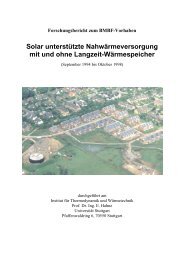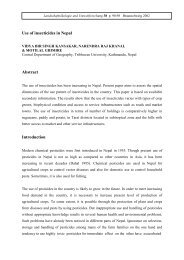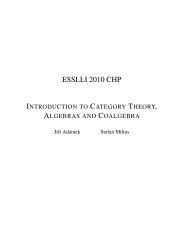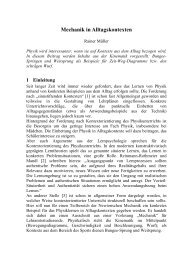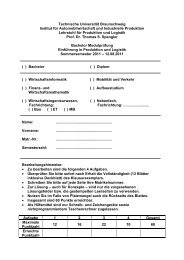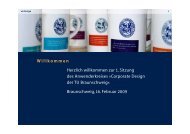Synopsis of Use and Economic Value of Pesticides and Chances for ...
Synopsis of Use and Economic Value of Pesticides and Chances for ...
Synopsis of Use and Economic Value of Pesticides and Chances for ...
Create successful ePaper yourself
Turn your PDF publications into a flip-book with our unique Google optimized e-Paper software.
3. ECONOMIC VALUE OF PESTICIDES<br />
Crop losses (pre- <strong>and</strong> post - harvest) due to pests (mainly insects, diseases, weeds <strong>and</strong><br />
rodents) in Nepal have been estimated at 20-35% (Shrestha, 2001). In many instances<br />
pest control certainly pays to the farmers. In Nepal farmers manage the weeds manually<br />
while pesticides (mostly synthetic chemicals) are used against obnoxious pests <strong>and</strong><br />
diseases (<strong>for</strong> example late blight <strong>of</strong> potato <strong>and</strong> tomato, rice blast, armyworms etc).<br />
Commercialization <strong>of</strong> <strong>of</strong>f-season vegetables has become very popular in Nepal near the<br />
high way corridors <strong>and</strong> city areas. This has stimulated the growers to use more inputs<br />
(specially chemical fertilizers <strong>and</strong> pesticides). In most cases farmers have been found to<br />
use more pesticides on vegetables. Even then it has been found to be economical. The<br />
following is an example from the IPM research site in Kabhre district (Table 10).<br />
Table 10. <strong>Economic</strong>s <strong>of</strong> Production <strong>of</strong> Potato <strong>and</strong> Tomato at Panchkhal VDC,<br />
Khabrepalanchok District, Nepal, 2000<br />
Particulars<br />
Cost <strong>of</strong> Production<br />
(Rs / ha)<br />
Quantity Produced<br />
(kg / ha)<br />
Potato Tomato Potato Tomato<br />
Cultural practices (ploughing, 68490 23681 124010 21800<br />
weeding, manure application etc.)<br />
Agricultural inputs 276435 56776<br />
Chemical fertilizers 77158 35968<br />
Seed 119071 1901<br />
Organic manure 76206 5704<br />
Irrigation 714 3880<br />
<strong>Pesticides</strong> 3286 3880<br />
Others 0 5444<br />
Total 344925 80457<br />
Calculation <strong>of</strong> Pr<strong>of</strong>it <strong>and</strong> Loss<br />
Potato: 124010 kg X Rs. 10 = Rs. 1240100 – Rs. 344925 = Rs. 895175 (Pr<strong>of</strong>it)<br />
Tomato: 21800 kg X Rs. 15 = Rs. 327000 – Rs. 80457 = Rs. 46543 (Pr<strong>of</strong>it)<br />
Source: CEAPRED, 2001<br />
4. POSSIBLE REDUCTION OF PESTICIDE APPLICATION RATES<br />
The following are some <strong>of</strong> the major areas which could help in the reduction <strong>of</strong> pesticide<br />
application rates in the Hindu Kush region countries.<br />
4.1 <strong>Use</strong> <strong>of</strong> Alternatives <strong>of</strong> Chemical <strong>Pesticides</strong><br />
A. Bio-control Agents<br />
Bio-control agents such as parasitoids (Trichogrammatids, Braconids, Chalcids,<br />
Ichneumonids etc.) <strong>and</strong> preadors (Chrysopa sp.); <strong>and</strong> microbeals (Bacillus<br />
thuringiensis), some nuclerar polyhedrosis viruses <strong>and</strong> a fungus (Trichoderma sp.)<br />
have been used in very limited areas in India (Atwal, 1993). Some <strong>of</strong> these agents are<br />
used in field trials in Nepal (Neupane, 2000).<br />
10






